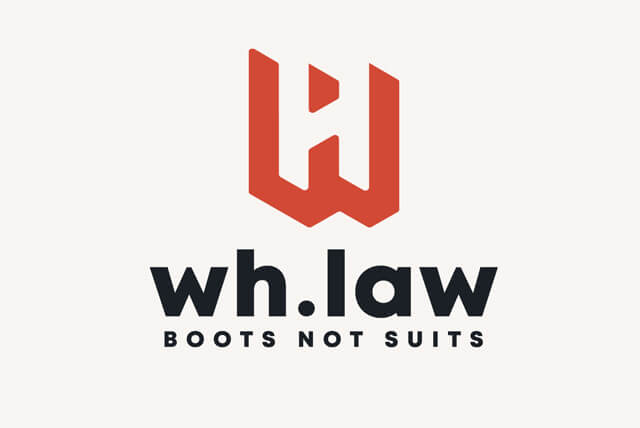What does harassment work look like, and what can you do about it? Corporate lingo aside, let’s talk about spotting the signs, understanding your rights, and combating harassment in your workplace. This article gives you the practical lowdown, without the fluff.
Key Takeaways
- Workplace harassment comes in many forms, including sexual, gender-based, and personal harassment, and has significant impacts on employee morale and productivity.
- Legal protections against workplace harassment cover various situations and employer responsibilities, mandating that employers prevent and address harassment and are liable for actions by supervisors and, in some cases, non-supervisors.
- Preventing workplace harassment involves implementing clear policies, comprehensive training, effective reporting procedures, and post-incident support to foster a safe and respectful work environment.
Understanding Workplace Harassment
Workplace harassment can take many forms, including workplace sexual harassment, as well as workplace violence and:
- Belittling or threatening behavior directed at individual workers or groups
- Bullying and intimidation
- Physical harassment, such as violence or unwanted touching
- Cyberbullying and online harassment
- Creating a hostile work environment that interferes with work performance, including through slurs, threats, or jokes
Identifying workplace harassment can be challenging, as it can blend into the work environment. It’s important to be aware of these different forms and take action to prevent and address harassment in the workplace.
The consequences of workplace harassment are significant and far-reaching. They adversely affect employee morale, productivity, and the overall workplace culture. In the wake of such revelations, it’s essential to understand this complex issue and its many aspects, including its different types and the legally protected characteristics that often become the targets of such behavior.
Types of Harassment
Harassment is not a one-size-fits-all problem. It morphs into various forms, each with its unique set of challenges. Sexual harassment encompasses unwelcome sexual advances, conduct, or behavior and is one of the most common forms of harassment. It can create a hostile and uncomfortable environment for the victim. But it doesn’t stop there. Gender-based harassment involves discriminatory behavior towards a person based on their gender expression. This type of harassment can contribute to a hostile and unwelcoming environment for individuals.
Then we have personal workplace harassment, a category that might seem less obvious but is equally damaging. This type of harassment consists of actions that create an intimidating and hostile environment for individuals. Recognizing these different types is the first step towards combating harassment in the workplace.
Protected Characteristics
At the heart of many harassment cases lie the ‘protected characteristics.’ These are legally protected demographic attributes such as:
- race
- gender (including gender identity)
- sexual orientation
- religion
Harassment becomes ‘discriminatory harassment’ when it involves unwelcome conduct, offensive, and negative behavior towards an individual or group based on these protected characteristics, including racial harassment.
However, the list of protected classes isn’t set in stone. While some protected classes, like sex/gender and race, are consistent across many jurisdictions, others like political affiliation, marital status, and personal appearance can vary by state and local jurisdictions. As our understanding of workplace harassment evolves, the portfolio of protected classes is occasionally expanded to include new characteristics under federal, state, or local laws.
Recognizing and Identifying Harassment in the Workplace
Recognizing harassment is like finding a needle in a haystack – it’s not always obvious. The shift towards remote work has highlighted the importance of managing harassment that occurs through virtual communication channels, indicating that recognizing harassment is not limited to in-person interactions. In fact, signs such as:
- Attendance problems
- Decreased productivity
- Inconsistent work patterns
- Concentration problems
- Poor health and hygiene
- Unusual/changed behavior
All can indicate that an employee may be experiencing workplace harassment.
To handle harassment reports and investigations effectively, adopting a trauma-informed approach is crucial. This approach minimizes further stress or re-traumatization of the victims. But recognizing harassment is only half the battle.
Identifying red flags and understanding the role of bystanders is equally important.
Red Flags
Identifying red flags is like playing detective – you have to pay attention to the details. Performance and conduct indicators can signal potential workplace harassment. These can include:
- Excessive sick leave
- Tardiness
- Decreased productivity
- Poor judgment
- Inappropriate reactions
- Mood swings
In today’s society, it is important to understand the implications of offering or accepting sexual favors, as it can lead to a variety of legal and ethical issues. It is crucial to maintain professional boundaries and respect the autonomy of others in both personal and professional settings.
Harassing behaviors at work, also known as harassing conduct, can take many forms. They can present as offensive conduct, such as:
- offensive jokes, including sexual comments
- epithets
- name-calling
- physical assaults or threats
- intimidation
- ridicule
- insults
- offensive objects or pictures
- interference with work performance
It’s essential to be able to spot these red flags, as they can help prevent a situation from escalating into a full-blown harassment case.
The Role of Bystanders
In the fight against workplace harassment, bystanders play a critical role. They can prevent harm and promote community safety by taking action to intervene in harmful behavior, such as workplace harassment. Recognizing the levels of violence and response can help bystanders determine the seriousness of a situation and the appropriate action to take, including when harassment might be occurring.
Bystanders can also provide support to the victim. By intervening, they send a clear message that harmful behavior, like quid pro quo harassment, is unacceptable and will not be tolerated. Employers should create an environment where employees feel confident that their concerns will be addressed, which encourages reporting harassment early to management to prevent its escalation.
In essence, bystanders are the unsung heroes of a harassment-free workplace.
Legal Aspects of Workplace Harassment
The legal implications of workplace harassment are like a labyrinth – complex and multifaceted. Here are some key points to keep in mind:
- Under Title VII and the ADA, employers with 15 or more employees are covered.
- Under the ADEA, employers with 20 or more employees are covered.
- Employers are automatically liable for harassment by a supervisor that results in a negative employment action such as termination or failure to promote.
To avoid liability for a supervisor’s harassment that does not result in a tangible employment action but creates a hostile work environment, employers must demonstrate that they:
- Exercised reasonable care to prevent and correct any harassing behavior
- Provided preventive or corrective opportunities for employees
- The employee unreasonably failed to take advantage of these opportunities
This makes it crucial for employers to understand their responsibilities and liabilities under different laws.
Title VII and Civil Rights Act
Title VII of the Civil Rights Act of 1964 is a vital piece in the legal puzzle of workplace harassment. It prohibits employment discrimination based on:
- race
- color
- religion
- sex
- national origin
Not only does it address adverse employment actions like firing or failing to promote, but it also covers hostile work environments marked by severe discrimination, intimidation, ridicule, or insult.
Employers are subject to vicarious liability for violations caused by their managing employees and are obligated to accommodate employees’ religious practices unless it imposes undue hardship. Furthermore, the Equal Employment Opportunity Commission (EEOC) investigates harassment allegations, assessing the overall record, conduct nature, and incident context on a case-by-case basis. This makes Title VII a key player in the fight against workplace harassment.
Employer Liability and Responsibility
Employers carry a significant share of the responsibility when it comes to workplace harassment. They are automatically liable for harassment by a supervisor that results in a negative employment action such as termination or failure to promote. To avoid liability for a supervisor’s harassment that creates a hostile work environment, employers must prove they attempted to prevent and promptly rectified the behavior and that the employee did not utilize preventive or corrective opportunities offered.
Moreover, employers are liable for harassment by non-supervisory employees or non-employees they control if they knew or should have known about the harassment and did not take prompt and appropriate corrective action. These legal responsibilities underline the importance of prevention and early intervention in managing workplace harassment.
If you have been harrassed and you need to talk to an Arkansas or Tennessee employment lawyer, we can help.
Preventing and Addressing Workplace Harassment
Preventing and addressing workplace harassment is like steering a ship through stormy seas – workplace harassment requires careful navigation and proactive measures. It is crucial to provide employees with training on recognizing and reporting harassment in the workplace. This will help create a safer and more supportive work environment for everyone. Employers must take direct responsibility for preventing workplace harassment through proper training programs which teach employees not just how to respond, but how to act proactively.
Sexual harassment prevention training, for instance, is more effective when it includes video examples, guidelines, and a final test to ensure comprehension. Online training programs allow for flexible access, especially during times when in-person training is not feasible, such as during the COVID-19 pandemic. These strategies are crucial in building a robust defense against workplace harassment.
Implementing Policies and Training
Implementing clear anti-harassment policies and training programs is an essential step in preventing workplace harassment. Employers are encouraged to:
- Establish these policies with an emphasis on immediate action upon complaints
- Provide customizable training that addresses specific organizational needs
- Stress multiple types of harassment and provide resources for those in support roles, including education on trauma
Training programs must include clear reporting procedures and trainings for managers to be sensitive to employees’ reports, fostering an environment where employees feel supported to report incidents. Regular evaluations of harassment prevention strategies, including the analysis of complaint trends and employee feedback on training effectiveness, are important for continuous improvement.
It’s all about creating a culture of respect and safety in the workplace.
Reporting Procedures
Building robust reporting procedures is like constructing a safety net – it provides reassurance and protection. Utilizing an online or electronic reporting system can facilitate the discreet and prompt filing of workplace harassment complaints. Moreover, organizations must inform employees of their rights under laws and provide easily accessible information about external support options through various workplace channels.
Effective harassment reporting procedures must:
- Ensure confidentiality and protect from retaliation for both the complainant and the accused
- Provide multiple channels for harassment reporting, such as a designated person, hotline, or email, to encourage more comfortable and comprehensive complaint filing
- Use a multi-pronged approach to boost confidence in reporting procedures and reinforce a supportive workplace culture.
Dealing with the Aftermath of Harassment
Dealing with the aftermath of harassment is like picking up the pieces after a storm – it requires sensitivity and careful handling. Victim support should be a continuous process, embedded from the start of the harassment claim through to the resolution and beyond, including follow-up checks and possible long-term adjustments. A comprehensive safety and wellbeing framework should be established that outlines the procedures and support systems for individuals involved in harassment cases.
Ensuring the integrity of the investigation and response to harassment includes:
- Having distinct roles for support personnel, investigators, and decision-makers, to prevent conflicts of interest
- Sometimes, restorative actions such as mediation, behavioral coaching, or restorative forums might be necessary to facilitate the recovery process, especially if the workplace environment includes both victim and perpetrator post-resolution
- It’s all about providing the right support and learning from these experiences.
Providing Support
Providing support to victims of harassment is like offering a safety blanket – it’s about reassurance and helping them regain their footing. Proactive support through an Employee Assistance Program (EAP) can offer victims counseling and additional well-being support. Empowering victims of harassment can be achieved by providing multiple reporting options and ensuring diverse representation among those who receive reports.
During the complaint process, victims may benefit from the presence of a support person or representative, adding an additional layer of support. An Immediate Response Plan should be in place to swiftly assess situations and provide necessary support, with clear boundaries and responsibilities for support providers. It’s about creating a strong support network for those who have experienced harassment and ensuring immediate and appropriate action is taken when needed.
Lessons Learned
Learning from past harassment incidents is like turning the page – it’s a chance to start anew and make things better. Continuously refining the response to harassment based on retrospection and experiences from past incidents contributes to more effective support measures and resolution processes. Lessons learned from past harassment incidents are essential for revising training materials and workplace policies, which can help prevent future occurrences.
Active involvement from senior leadership in addressing harassment underscores its significance within the organization and helps ensure commitment to enacting changes based on learned experiences. Scheduling follow-up check-ins after the resolution of a harassment issue is instrumental in evaluating the adequacy of support provided and the effectiveness of the actions taken. It’s all about taking the lessons learned and using them to create a better future.
Summary
Workplace harassment is a complex issue that requires careful navigation and proactive measures. From understanding different types of harassment and recognizing red flags to the legal aspects and support for victims, the journey to a harassment-free workplace is multifaceted. However, with clear policies, comprehensive training, robust reporting procedures, and continuous learning from past incidents, it’s entirely possible to steer the ship through stormy seas towards a safer, more respectful workplace.
Frequently Asked Questions
What can be considered workplace harassment?
Workplace harassment can include unwelcome verbal, nonverbal, environmental, or physical conduct, such as offensive jokes, name-calling, intimidation, or interference with work performance (without the date at the end).
Can I get someone fired for harassment?
Yes, you can get someone fired for harassment, especially if it involves sexual harassment. Employers are responsible for creating a respectful and safe workplace, and harassment can lead to termination of employment.
What qualifies as a hostile work environment?
A hostile work environment is established by unwelcome or offensive behavior in the workplace that causes employees to feel uncomfortable, scared, or intimidated. It includes serious instances of harassment and discrimination against protected characteristics such as race, religion, sex, age, and disability.
What are the three 3 types of harassment?
The three types of harassment are verbal, visual, and physical.
What are protected characteristics?
Protected characteristics are legally protected demographic attributes, such as race, gender, sexual orientation, and religion, which when targeted with offensive behavior constitute discrimination.






